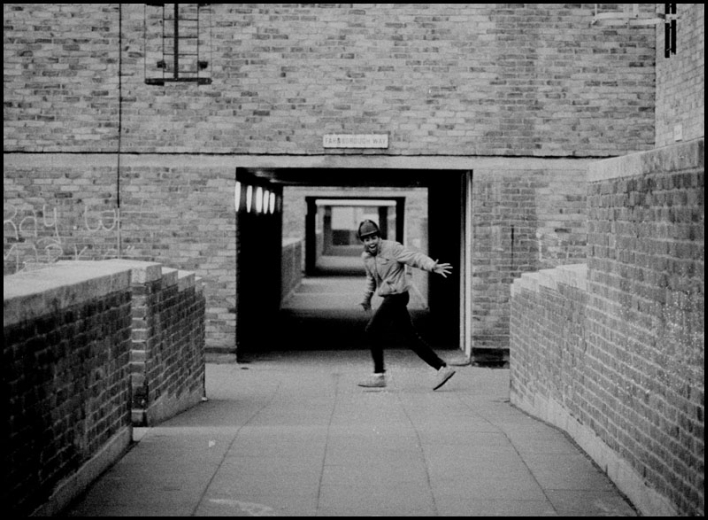Challenging conventional assessments: Embracing medium and long-Term, qualitative dimensions in social value and POE of housing schemes
Created on 16-10-2023
The challenge in the context of housing is the prevalent methodological approach in both SV assessments and Post-Occupancy Evaluation (POE). Typically, these assessments revolve around short- and medium-term outcomes and disproportionately rely on quantitative data and financial metrics, omitting valuable qualitative dimensions. This methodological narrowness has significant implications for the social assessment of regeneration projects and housing initiatives.
Despite the apparent recent interest of UK government departments in promoting the adoption of POE in the housing sector, it is surprising and contradictory that, for example, in a recent report commissioned by Homes England (Homes England & AMION, 2023), the government’s housing and regeneration agency, to assess the SV of housing-led regeneration on communities, there is not a single mention of POE as a tool that can contribute to the assessment. Instead, as is the case with mainstream methods to measure SV, hedonic pricing methodologies are the sole approach used to calculate the effects of regeneration. While financial proxies, cost-benefit analysis CBA and key performance indicators (KPIs) can be powerful tools to demonstrate the value created, they cannot be the sole means of assessing and demonstrating outcomes, particularly when it comes to the multifaceted concept of SV. Yet, the influence of a report issued by this government agency is substantial and, above all, an example of how much the social assessment of regeneration is neglected in the public agenda and, as a consequence, has far-reaching consequences for the private sector.
A POE, which directs assessment towards the inhabitant, represents a tool that can significantly enhance the SV landscape. If POE is recognised as a valuable tool to assess SV, it could be included as an integral part of the procurement of any new housing project from its planning stage. If we counterbalance the social side of sustainability with the other two, giving equal heed in the estimation of housing outcomes, we will be making sure that no one is left behind, a must in the levelling up agenda that aims to bridge inequalities in the UK. This can contribute to preventing regeneration projects from advancing at the expense of vulnerable communities. As has been evidenced, housing-led regeneration and major urban renewal projects across Europe, in some cases have disastrous consequences for the livelihood of certain minority groups.
Systems knowledge
Actors
Housing developers
Non-profit and for-profit housing organisations that undertake various tasks, such as the construction and management of housing.
Housing authorities
A government agency, usually at the municipal, county, or state level, provides and oversees various housing-related programmes and services.
Method
Interdisciplinary collaboration
Teams from different disciplines or fields work together to tackle complex problems, find innovative solutions and develop a broader understanding of a particular issue. This approach recognises that many real-world challenges cannot be adequately addressed within the confines of a single discipline or field.
Knowledge co-creation
A collaborative process in which individuals or groups with different backgrounds and expertise come together to generate new knowledge, insights or solutions collectively. This approach recognises that knowledge creation is not limited to experts or academics but can come from exchanging ideas, experiences and perspectives from various sources.
Sustainability assessment systems
Frameworks, tools or methodologies used to assess and measure the sustainability performance of various entities, such as buildings, infrastructure projects, organisations and communities. These systems help assess and quantify environmental, social and economic impacts so that stakeholders can make informed decisions and improve sustainability practises.
Tools
Sustainability assessment systems
Frameworks, tools, or methodologies used to assess and measure the sustainability performance of various entities, such as buildings, infrastructure projects, organisations, and communities. These systems help assess and quantify environmental, social and economic impacts so stakeholders can make informed decisions and improve sustainability practices.
Target knowledge
Topic
Building regulations
A set of government-mandated standards, rules, and requirements that define how building and construction projects should be designed and executed.
Social housing perception
Social housing is a term for housing provided or subsidised by government or non-profit organisations to meet the housing needs of individuals or families with low incomes or special needs. Perceptions of social housing can vary widely among different groups and are influenced by several factors, including cultural, economic and political contexts.
Building sustainability
The practise of designing, constructing and operating buildings in a way that minimises their negative impact on the environment and promotes long-term environmental, social and economic sustainability.
Level
Building
The structure, project or development that is directly impacted by the various building regulations.
Country
The political structure governs a specific geographical area and accommodates a specific population group.
Transformation Knowledge
No references
Related vocabulary
Affordability
Transdisciplinarity
Sustainability
Co-creation
Participatory Approaches
Just Transition
Area: Policy and financing
Created on 15-07-2021
Read more ->Area: Community participation
Created on 21-07-2021
Read more ->Area: Community participation
Created on 08-09-2021
Read more ->Area: Community participation
Created on 16-02-2022
Read more ->Area: Community participation
Created on 17-02-2022
Read more ->Area: Policy and financing
Created on 03-06-2022
Read more ->Blogposts

'we shape our buildings and afterwards our buildings shape us'
Posted on 07-02-2023
Secondments
Read more ->